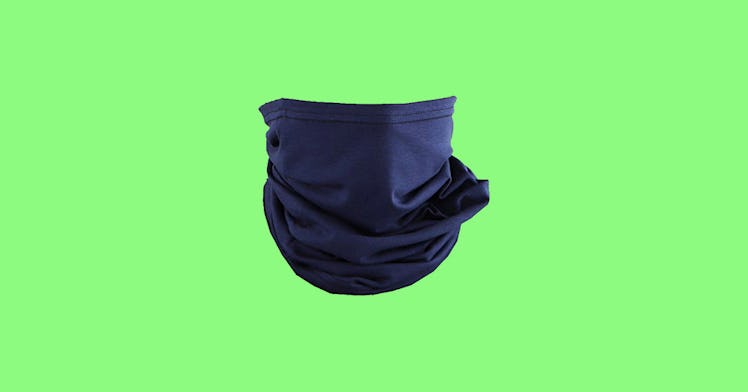The Eight Best Neck Gaiters to Buy If You Really Can’t Deal With Masks
They're not worse than wearing nothing, but you'll want to choose wisely. Here's what you need to know.

The best neck gaiters are meant to protect your face and neck from the elements, and they’re designed to be breathable, which is just one reason runners and hikers swear by them. The main selling point of neck gaiters may also be their biggest drawback, though, in the coronavirus era: The more breathable a face covering is, the more likely it is to be made from loosely woven fabrics — which are less effective at containing droplets and therefore at stopping the spread of COVID-19.
That said, neck gaiters aren’t “worse than no mask at all,” despite the bad press they got following a recent Duke University study. (The study, contrary to headlines, was not even designed to evaluate face coverings but rather to establish criteria for doing so.) The CDC recently updated its recommendations on masks, advising against neck gaiters and face shields, saying that “Evaluation of these face covers is on-going but effectiveness is unknown at this time.” The TL;DR is that we still don’t know if gaiters are any more or less effective than masks.
“Anything that is two-ply, like a simple cotton mask with two layers, is effective at filtering out the majority of viral particles,” says Dr. Monica Gandhi, the associate division chief of the Division of HIV, Infectious Diseases, and Global Medicine at UCSF/ San Francisco General Hospital. “There is no way to know at this moment how well every material works. Anytime you put on a cloth face covering, the country is doing better. Anything that protects you is good, but we don’t know the exact level of protection with every type of fabric.”
Basically, face masks are a better option than neck gaiters. But if you must wear a neck gaiter instead of a cloth face mask, you should look for the same qualities that you would look for in a mask: According to Johns Hopkins Medicine, face coverings should be made of densely woven, ideally non-stretchy cotton fabric, have two or more layers of fabric, and have as little gapping as possible (gaiters at least have the latter going for them). To look at the tightness of the weave, hold the fabric up to the light; if you can see the individual fabric fibers, it’s not a dense weave.
We parsed through the many neck gaiters on the market to find the ones that most closely meet the criteria: Most are made of cotton, and where cotton wasn’t an option, we recommend either two-ply gaiters, or layering two neck gaiters together for better protection.
Every product on Fatherly is independently selected by our editors, writers, and experts. If you click a link on our site and buy something, we may earn an affiliate commission.
This article was originally published on